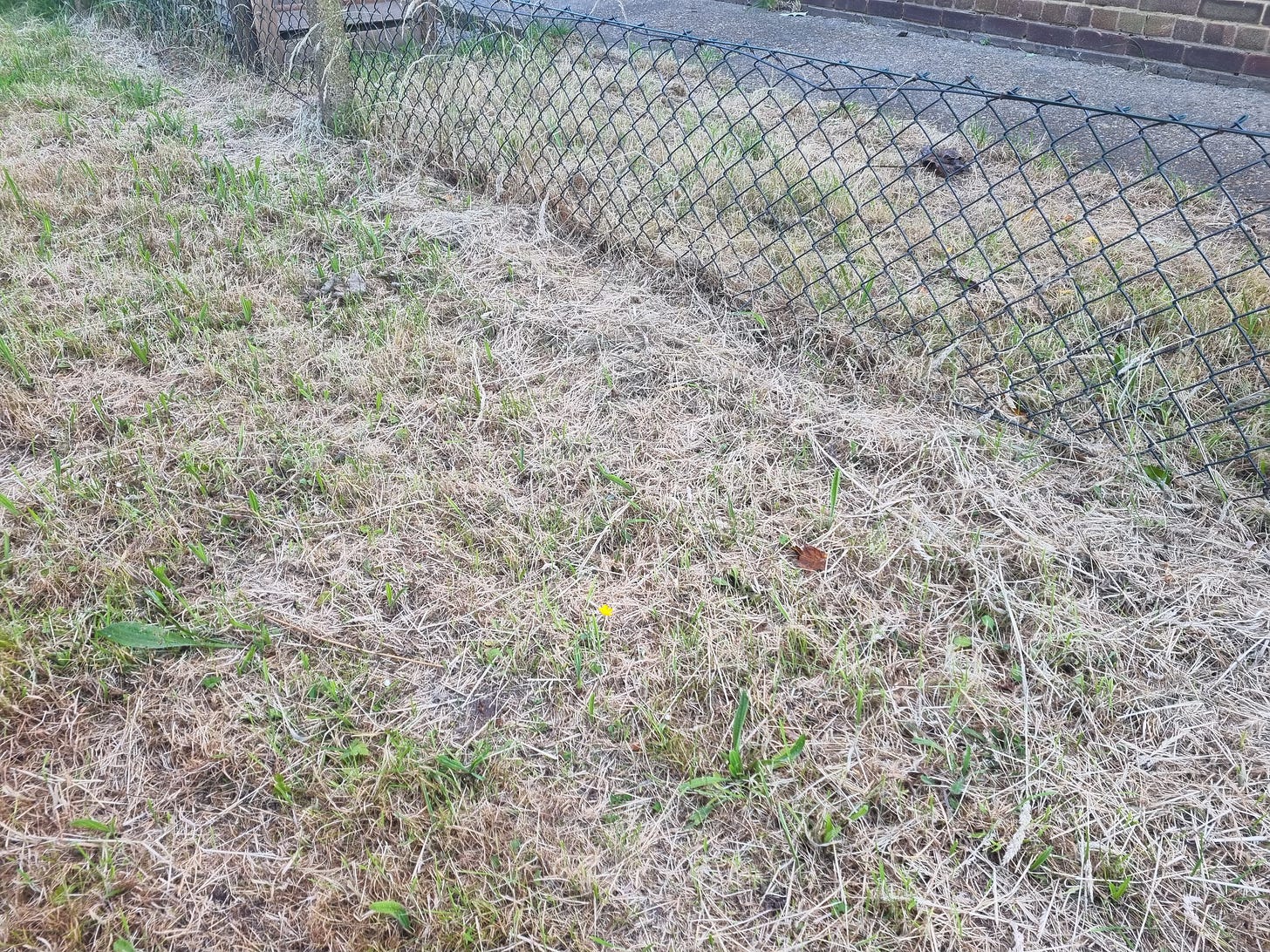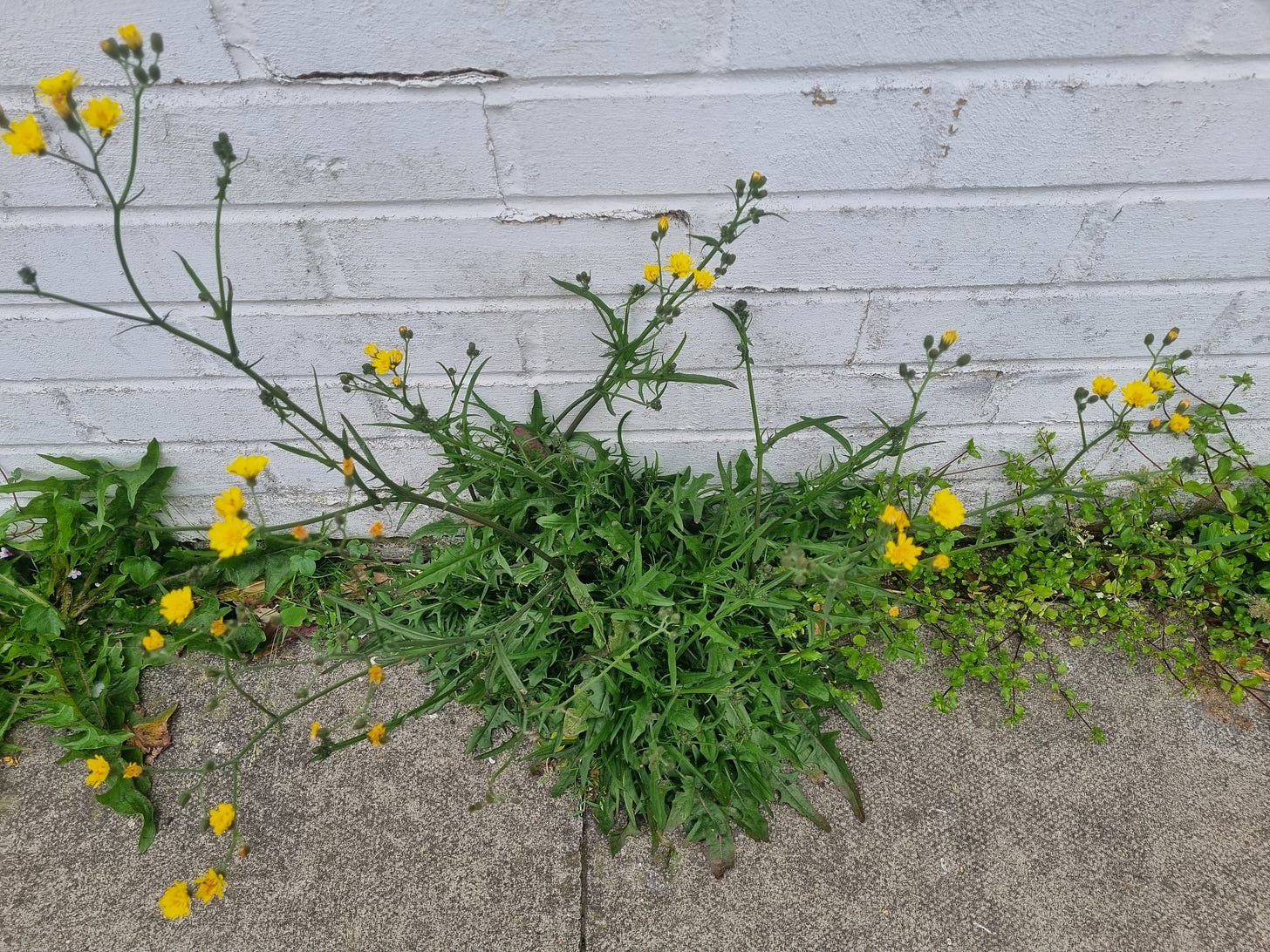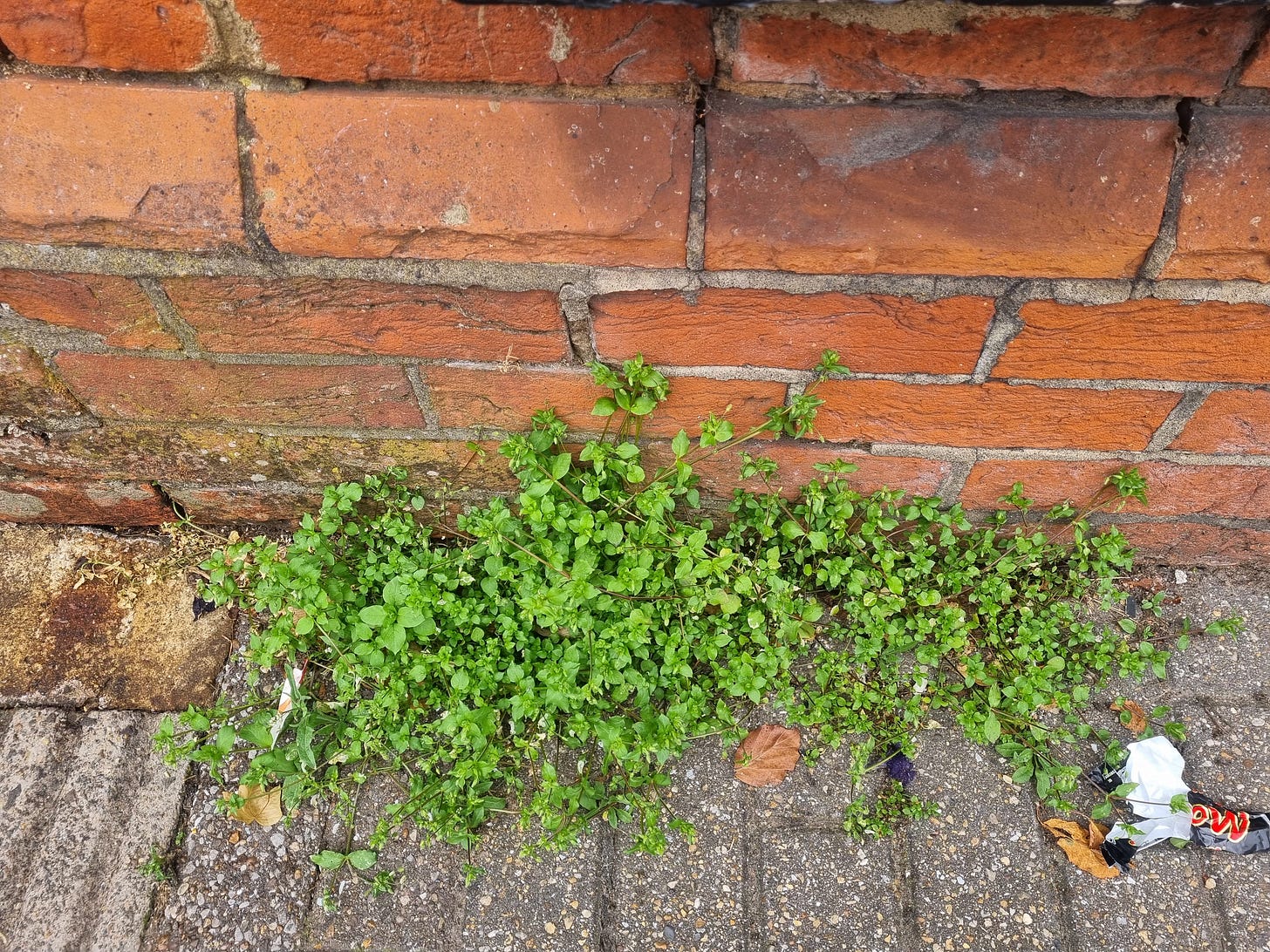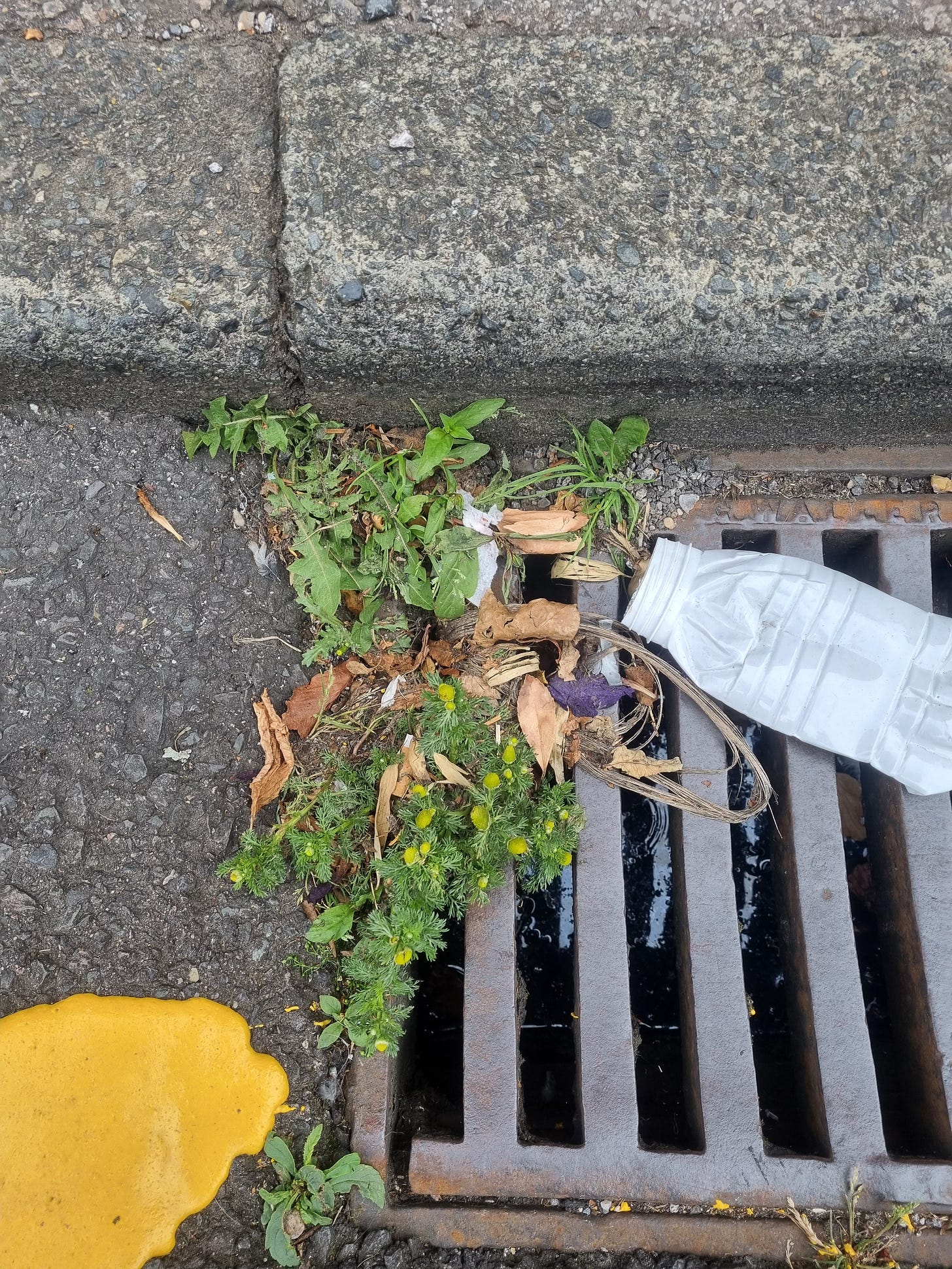This week I have been plagued by the sounds of strimmers and lawnmowers, municipal workers and neighbours obsessively neatening and controlling patches of “nature”, chopping back the myriad of grasses, herbs, and flowers and listen in horror to the habitats for countless insects, reptiles, amphibians and small mammals being destroyed. In these spots in my local area, I may have collected the odd leaf or flower for an infusion, ox-eye daisy, clover, yarrow, mallow, cat’s ears, or just wondered at them, the different varieties of grasses, their shades of green to purple to silver of False oat-grass, Perennial rye-grass, Yorkshire fog. In ‘The Silence of the Lawns’ a talk on lawns and white supremacy last year, eco-philosopher Timothy Morton claimed, that the smell of freshly cut grass that is so evocative, and to which we are so poetically drawn is the equivalent in plant life of our mammalian stress hormones that are released when we are in pain and that it is actually the aroma of “lawns screaming” (Morton, 2023).
What is it that we, as a society, have against weeds? Royal Horticultural Society Fellow, Audrey Wynne Hatfield sets out a plea in her small book, How to Enjoy your Weeds first published in 1969:
“…we have corrupted this word, [weeds] and its meaning, it was wèods, the Anglo-Saxon name for all herbs or small plants; some they called wyrt--our wort. To past generations of men all plants were regarded with respect, some with affection, and some were feared. Many of them were either food or medicine, or they possessed religious or magical influences. A number of the plants we scorn today as our ‘weeds’ were ready and waiting with their health-giving qualities to serve man and beast long before grasses had numbers of fat ears, or root-crops had thick tubers, or fruit trees produced large juicy fruits. We must owe to them the support of our earliest ancestors and their health and strength to survive and progress. We should never belittle the original and constant value of such herbs” (1974:27).
This obsession with the elimination of such important yet what might now be considered as ‘marginal’ plants, is a continuation of a colonial mindset, of “hierarchies and an imagined superiority” [which] influences “the way we see plants, ‘nature’ and the way we garden” claims Radicle the Substack newsletter from @decolonisethegarden. The desire to rid our lawns, verges, and gardens of weeds is an act of colonial thinking, an “imperative to control and dominate” (2022).
The agrochemical industry is bonded to the military-industrial complex - with fertilisers and pesticides having been developed from chemical weapons after the Second World War - mutually fuelling desires and actions of domination over human and non-human others. They are both also massive contributors to greenhouse gasses rapidly warming our planet. Often weeds “are an economy of the waste places, prying through cracks in the pavements of toxic dump sites, parking lots and highway verges, where they can help remediate the soils,” writes Jennifer Kabat in ‘The Secret History of Weeds’ in an issue of Frieze magazine in 2021. She claims that despite this attempt to cleanse our urban places and mono-cropped fields, weeds resist, “they grow outside the rows, outside the lines, asserting other narratives. These plants no longer deemed useful, which capitalist farming sets out to destroy, can help reclaim […] lost landscapes” (Kabat, 2021).
More than 50 years after Hatfield made her plea, some of the establishment in gardening and horticulture may be pivoting to once again believing in the wonder of weeds. At last year’s Chelsea Flower Show, they were “rebranded” as “resilient plants” “weed heroes” and “superweeds” (Grierson, 2023).
As a child, and up until my early twenties I had anxiety about walking through the agricultural landscapes around my village. I was afraid I might get caught in a field as it was being cropped sprayed and might breathe in the dangerous chemicals. I have no idea where this fear came from and whether I ever saw a plane administering a pesticide, but growing up, these fears kept me from feeling at home in the natural world. They severed me from the outside and from being fully myself. They still haunt me when I’m foraging. I am not now so concerned that I will actually be sprayed on but rather that I may gather foods from places that have been contaminated by these invisible chemical poisons, herbicides, insecticides, fungicides. UK Green Party MP, Caroline Lucas recently brought an Early Day Motion to parliament to “recognise the harm caused to both human health and the environment by the use of pesticides such as glyphosate call[ing] for legislation to be introduced to implement a national phase-out of all pesticide use in public areas under local authority control as has been done in France and Luxembourg”. The motion recognises that over already “100 local authorities […] have either ended their use of pesticides or taken significant steps towards doing so.”
Chickweed growing in an urban crack
I’m not sure how the UK’s General election will affect this, but you can follow the progress and urge your local councillors to take action via the Pesticide Action Network. There is a petition to sign, and also template letters to write to your local councillors urging them to support the motion, and to CEOs of the big supermarkets to remove harmful pesticides including weedkillers from the shelves, like Waitrose and the Co-op already have.
So this, the Commons Feast project sits in solidarity with weeds in their resistance. Here we celebrate and reconnect to their power, and to the land where they reside, through the old ways, unearthing their knowledge, which is our birthright, our commons wealth, of wild foods and medicines, enabling us, as Indigenous American Potawatomi botanist, Robin Wall Kimmerer writes in Braiding Sweetgrass, to come back into “right relationship” with the natural world (2020).
Pineapple weed or street weed, and dandelion.
Morton, T. (2023) The Silence of the Lawns. [Sheffield: Urban Institute, University of Sheffield 1/3/2023]. Recording at:
(Accessed 15/6/2024).
Hatfield, A. W. (1974) How to Enjoy your Weeds Century Hutchinson @decolonisethegarden (2022) ‘Decolonise the Garden’ In: Radicle 6/9/2022 At:
(Accessed 15/6/2024).
Grierson, J. (2023) ‘Chelsea flower show gardens to rebrand weeds as “hero” plants’ In: The Guardian25/4/2023 At: https://www.theguardian.com/lifeandstyle/2023/apr/25/chelsea-flower-show-gardens-rebrand-weeds-hero-plants (Accessed 14/6/2024).
Caroline Lucas tabled EDM 739 (2023-24) Pesticide use in towns and cities. At: https://edm.parliament.uk/early-day-motion/62239#tab-supporters (Accessed 15/6/2024).
Kabat, J (2021) ‘The Secret History of Weeds: What a garden’s lowliest plants can teach us about resistance to capitalism and patriarchy’ In: Frieze 23/6/2021 At: https://www.frieze.com/article/jennifer-kabat-the-secret-history-of-weeds-2021 (Accessed 15/6/2024).
Wall Kimmerer, R. (2020) Braiding Sweetgrass: Indigenous Wisdom, Scientific Knowledge and the Teachings of Plants Penguin Books






